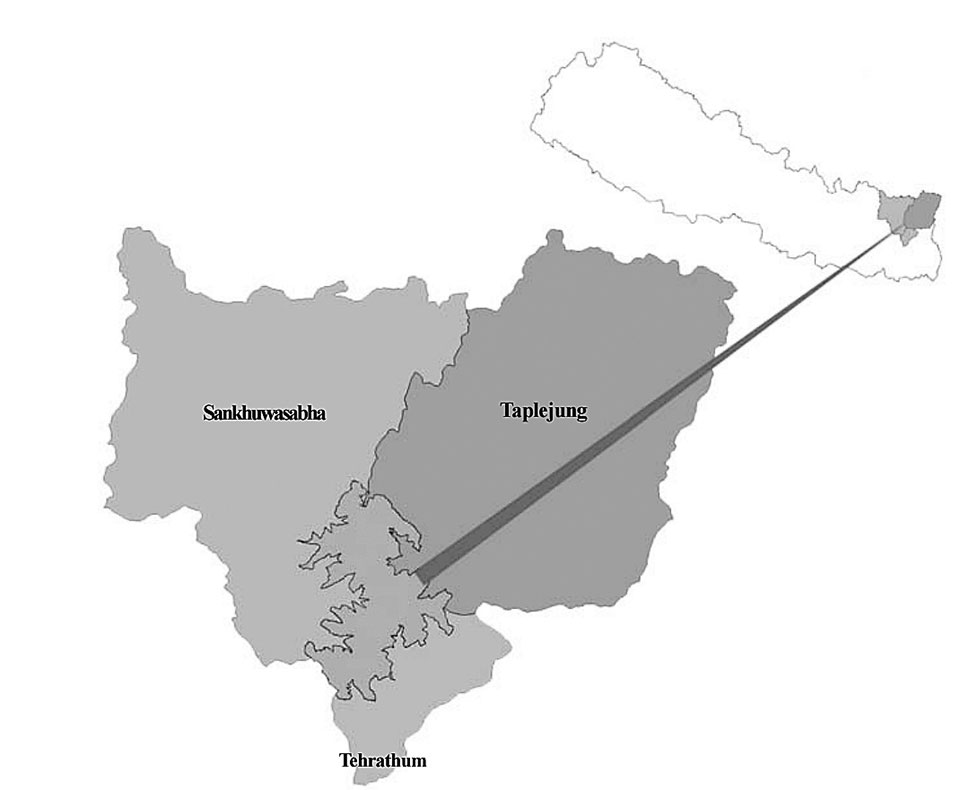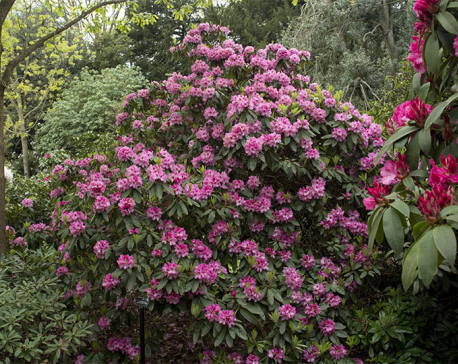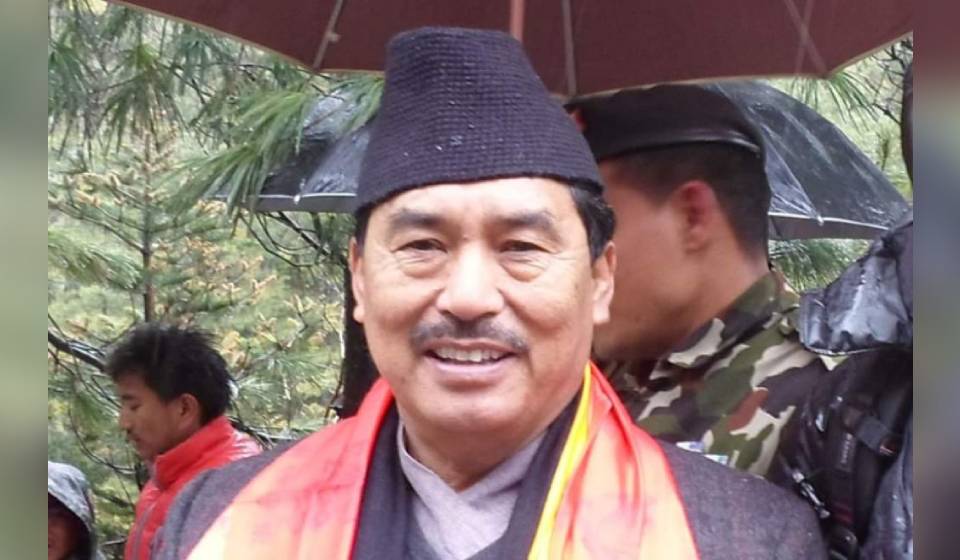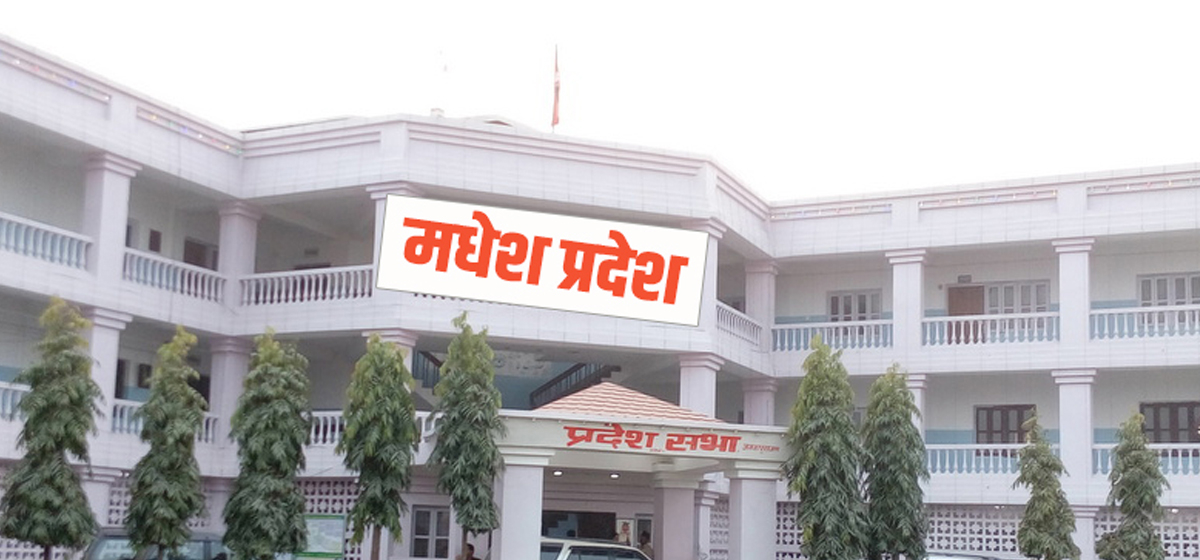
OR
Govt initiates community-based project to conserve forests in eastern Nepal
Published On: January 31, 2019 09:02 AM NPT By: Ram Saran Tamang

KATHMANDU, Jan 31: Known as the Rhododendron capital of the Himalayas, Tinjure-Milkhe-Jaljale (TMJ) forest complex in eastern Nepal has long been plagued by significant conservation issues that threaten to destroy the very charm of the beautiful landscape. The government hopes that its new community-based forest and biodiversity management plan would address the crisis and avert further damage to the terrain caused by loss of forest and habitat due to the traditional slash-and-burn method of agriculture, overgrazing, infrastructure as well as poaching.
The TMJ forest lies between Arun and Tamor rivers spreading across Tehrathum, Sankhuwasabha and Taplejung districts of eastern Nepal and also falls along the trans-boundary 'Sacred Himalayan Landscape'.
It is a home to 28 out of 31 species of rhododendron, the national flower of Nepal, and over 250 species of plants out of which 17 are endemic species. Likewise, it is also the habitat of various fauna including snow leopard, clouded leopard and red panda, thereby holding great significance from the point of view of conservation.
The TMJ Complex Conservation Project was introduced just three months ago with WWF Nepal as the implementing partner. It plans to work under the community-based biodiversity management plan with economic wellbeing of local communities and improvement of ecosystem as its main agenda.
“Our aim was to take forward TMJ as a conserved forest area. But that alone could not address the present-day need of conservation,” said Director General Ram Prasad Lamsal of the Department of Forests and Soil Conservation. “We can achieve sustained conservation only by involving local communities and improving their livelihood and the new model aims to do exactly the same.”
All three levels of government – federal, provincial and local – have significant roles to play in implementing the ambitious conservation project. The federal government is responsible for formulating polices and strategies while the provincial government will give direction to the project on priority basis.
Likewise, most of the expenses would be raised from the local levels, according to Lamsal. Adding to budget raised from local units, WWF Nepal has made an initial commitment of Rs 40 million annually to the project for three years.
Despite lots of benefits offered by the forest areas, TMJ forest complex faces many threats of both inadvertent and intentional nature. Excessive loss of forest and habitats, traditional slash-and-burn method of agriculture, overgrazing, linear infrastructure and the area developing as trade route for wildlife and non-timber forest products are some of the greatest threats, shared Ananta Bhandari, forest program lead of WWF Nepal.
“We are implementing various interventions under the project. Along with community-based forest management and forest conservation. We are also planning to promote alternative energy, green enterprises and ecotourism,” said Bhandari, adding that special institutions in the local community shall be developed and strengthened to implement the measures for intervention.
To make the forest area management more effective, the department has proposed a bill to change the term 'forest area' mentioned in the Forest Act 1993 as 'forest protection area'. The main difference between the two is that the term 'forest area' of the current Act covers only areas occupied by forest while the latter term also includes surrounding areas and settlements along the country's forest areas.
DG Lamsal of the department said the proposed bill is currently pending at the Ministry of Law and is set to be approved in the new Federal Forest Act by March.
WWF Nepal Country Representative Ghana Shyam Gurung urged the stakeholders to step up efforts for conservation arguing that Nepal's flora and fauna are the biggest tourist attraction that is making the country one of the top destinations in the world for tourism.
You May Like This

Climate change threatens our survival
Hindu Kush Himalaya Assessment report released by International Centre for Integrated Mountain Development (ICIMOD) raises alarm for the countries lying... Read More...

Rare ‘loderi’ rhododendron found in forests of Myagdi
MYAGDI, Feb 1: The rare ‘loderi’ variety of rhododendron has been found growing n the forests at Narchyang in Annapurna... Read More...

Climate change held responsible for early blooming of rhododendron
JAJARKOT, Dec 28: Rhododendron -- the national flower of Nepal -- normally blossoms in the months of Fagun-Chaitra (mid-February to... Read More...









Just In
- SC hearing on fake Bhutanese refugees case involving ex-deputy PM Rayamajhi today
- Clash erupts between police and agitating locals in Dhanusha, nine tear gas shells fired
- Abducted Mishra rescued after eight hours, six arrested
- Forest fire destroys 13 houses in Khotang
- Lungeli appointed as Minister for Labor and Transport in Madhesh province govt
- Bus knocks down a pilgrim to death in Chitwan
- One killed in tractor-hit
- Karnali Chief Minister Kandel to seek vote of confidence today










Leave A Comment